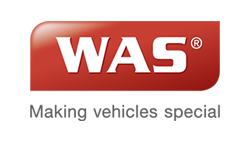

As part of Arab Health in Dubai, we met the Executive Director of the Dubai Corporation For Ambulance Services. The aim was not only to introduce him to our e-ambulance, but also to take advantage of the opportunity to ask him about Dubai’s emergency services.
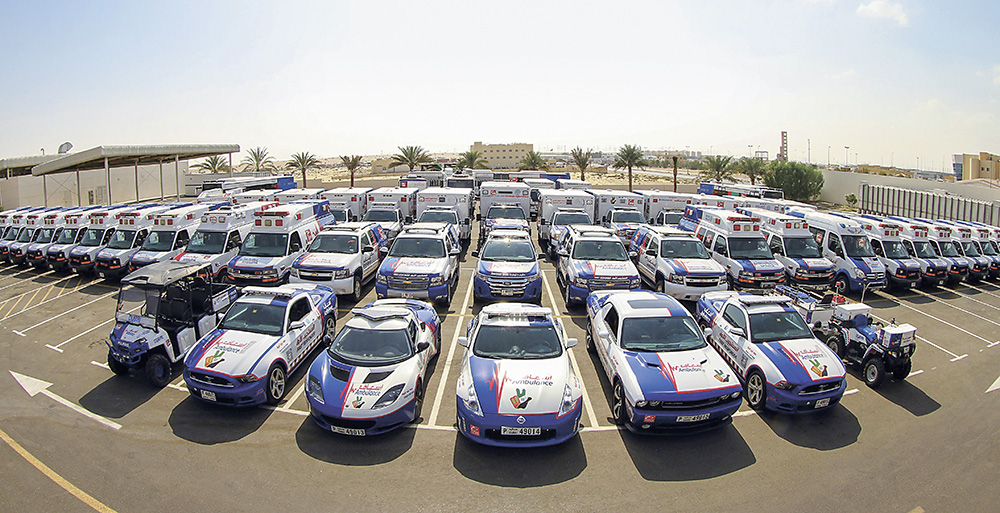
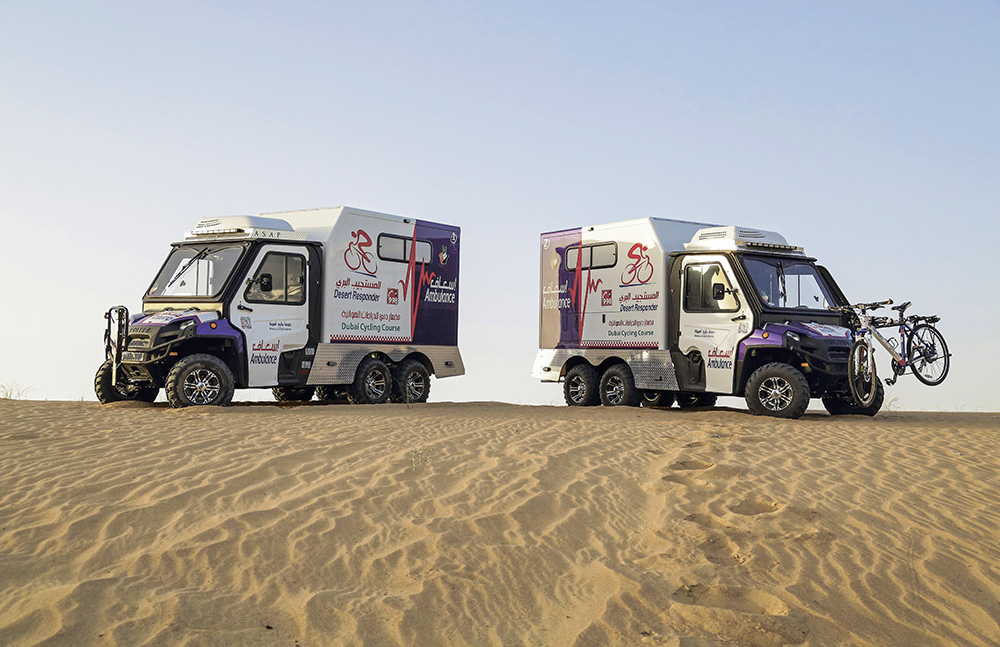
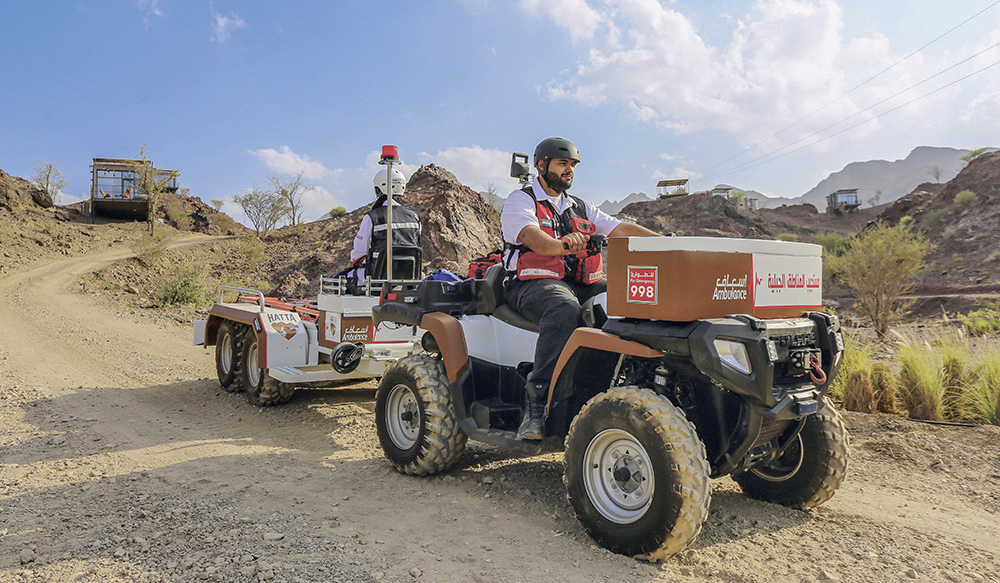
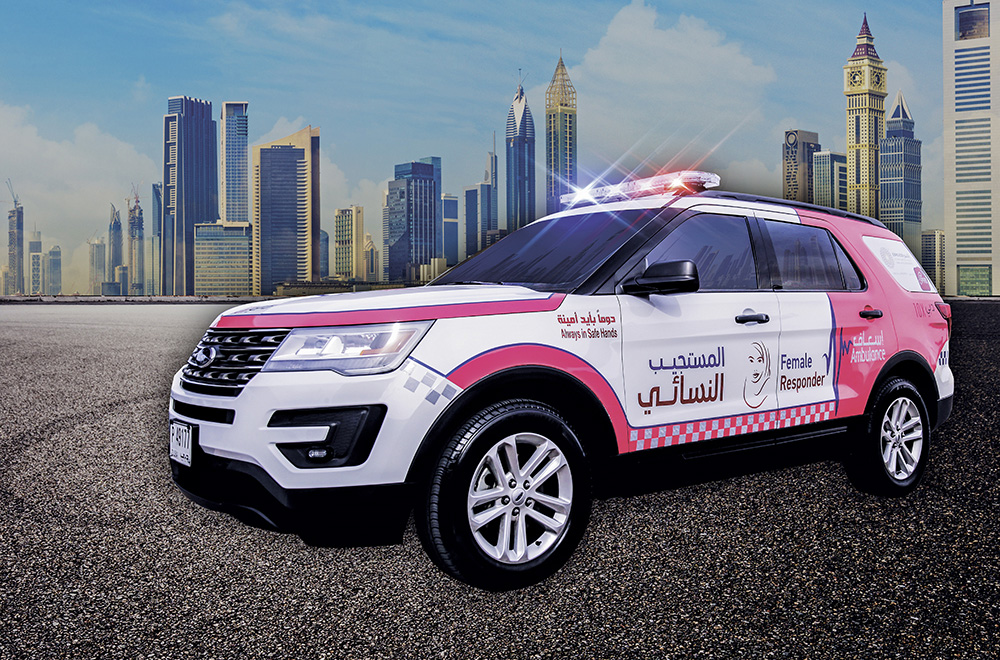
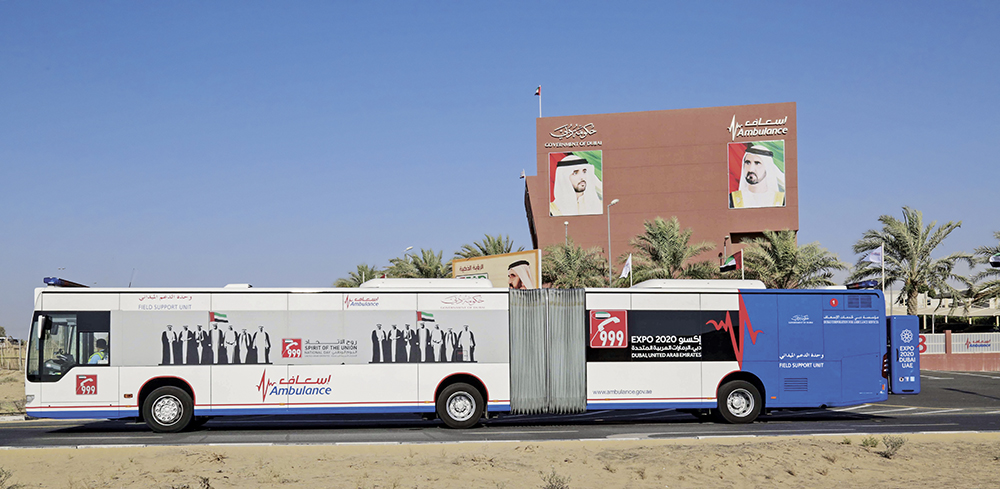
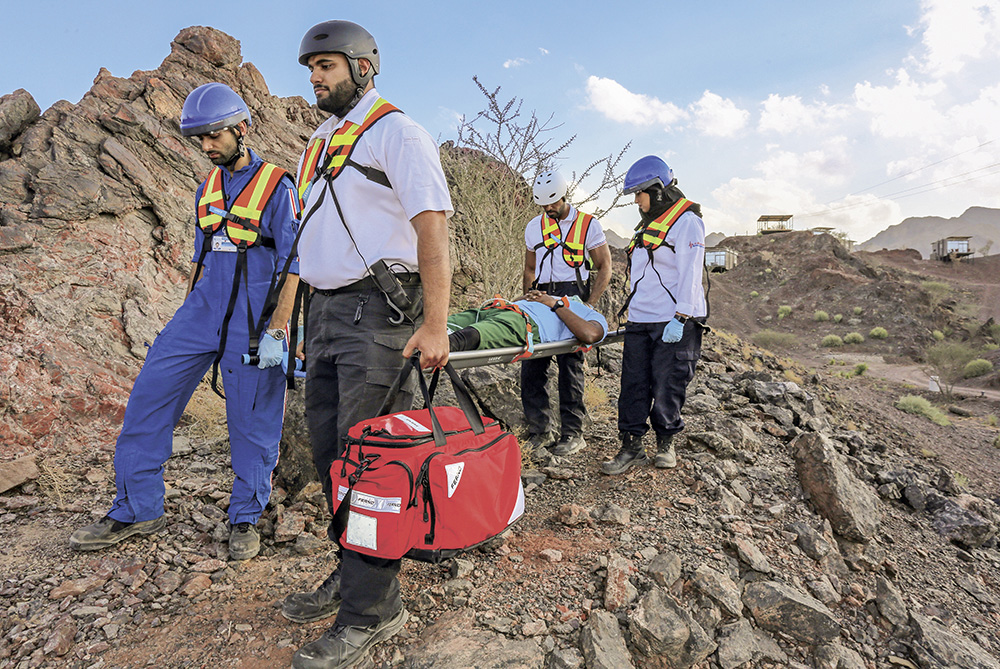
1. What makes DCAS so unique is the use of specialised vehicles to cope with the UAE’s complex societal structure. Tell us a bit more about your fleet.
The DCAS fleet definitely includes vehicles for very different ambulance services, some of which do not even exist in Germany. For instance, in an emergency involving a female patient, the emergency crew and doctors dispatched will always be exclusively female. A woman will also be in charge of driving the pink-clad ambulance to help keep stress levels for all involved as low as possible. Specially equipped ambulances are also used for pregnant women and for children. In addition, there are special “heart attack ambulances”, infection emergency vehicles, heavy duty ambulances for transporting obese patients and specially equipped vehicles for people with other mobility restrictions. Recreational off-road driving is common in the desert (as we reported in Issue #2) and this frequently results in accidents, so specialised, all-terrain vehicles are another standard requirement. These are also equipped with a cargo drone that can fly out a defibrillator or dressings to a patient. In order to be able to respond to any kind of crisis or emergency situation, DCAS also has three disaster-management buses in its fleet. As part of the Marine Unit C Disaster Team, Dubai Creek is additionally covered by a boat and emergency Jet Skis.
2. Is the service in Dubai organised in a similar way to Germany?
Yes, DCAS also responds using the Rendezvous system. When an emergency call is received by the control centre, a first-responder is initially dispatched, including a paramedic. They can then request an ambulance and an emergency doctor on the ground. If it is already clear from the emergency call that an ambulance is required, the responder, ambulance and, if necessary, an emergency doctor set off immediately. One special feature is that the responders are positioned on call in the 123 ambulance stations, which are strategically located across the entire emirate, whereas some of the ambulances are also located in urban areas. The control centre can see this at all times on a map thanks to the Acetech telemetry system, which enables them to notify the nearest free vehicle. Currently efforts are under way to reduce emergency response times from eight to six minutes.
3. How are the staff at DCAS organised?
DCAS employs about 1000 staff and works on a two-shift system. Around 250 people are deployed on each shift; with at least two emergency doctors among them. One particular feature that distinguishes our staff is their diversity. Since the population of the UAE is made up of so many different nationalities, we need people at the control centre who speak a wide range of languages: including Arabic, English, French, Spanish, Hindi, Pashtu, Urdu, Filipino, Chinese and Russian.
4. In Germany we are increasingly having to deal with staff shortages. What is staff recruitment and training like in Dubai?
As is typical in the UAE, most of our specialist staff come from abroad. This means they completed their training in their native country and with us they simply undergo an additional 22-day trainee programme to adapt their working methods to our standards. This system works well, but unfortunately these foreign paramedics often leave us after a couple of years to return to their country of origin. That is why we have been training increasing numbers of Emiratis over recent years as part of an Emiratisation* process. We currently have a total of 65 Emiratis working in the DCAS emergency service. Training at our academy takes three years, just like paramedic training in Germany.
Thank you for talking to us!
* So-called Emiratisation is an initiative by the government of the United Arab Emirates to employ more Emirati citizens and to deploy them in a meaningful and efficient manner in the public and private sectors.
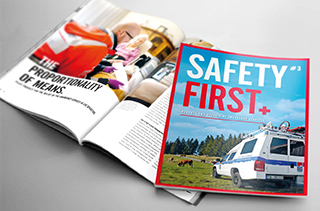
This text was first published in the WAS customer magazine „Safety First“. You can request a free copy of this and many other interesting topics by sending an e-mail to marketing@was-vehicles.com.





